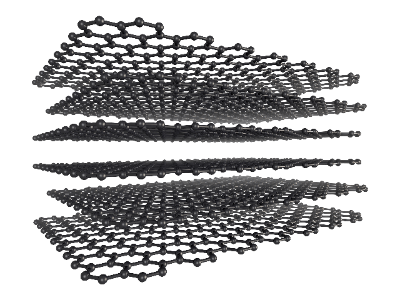What Is Graphene?
 Graphene is a sheet-like material composed entirely of carbon atoms.
Graphene is a sheet-like material composed entirely of carbon atoms.
The carbon atoms bond to each other to form a hexagonal honeycomb structure that spreads out in two dimensions. Since it is not ordered in the height direction, it is only as thick as a single carbon atom. As a result, it is very thin and transparent.
Uses of Graphene
Graphene is used in a wide range of fields due to its transparency and excellent thermoelectric and electrical conductivity.
1. Electronics
Graphene’s extremely thin and transparent properties make it suitable for display applications. Graphene also has the fastest electron transfer rate of any material at room temperature. Therefore, applications in transparent touch panels, conductive films, and solar cells are also expected. Furthermore, its chemical resistance and heat resistance are attracting attention as a substitute for silicon and other materials.
2. Fiber
Graphene itself is difficult to process into fibers, but development of fibers containing graphene is in progress. Fibers containing graphene are expected to be used as novel materials in various industries because they have functions similar to those of graphene. In the clothing industry, in particular, graphene is attracting attention because it fully satisfies the functions required for clothing.
Principle of Graphene
Graphene is conductive because the electrons occupying the 2pz orbitals of the carbon atoms can move freely in the plane. Each carbon atom has four valence electrons. Three of these valence electrons are distributed in sp2 hybrid orbitals (orbitals in the sheet direction), and the remaining one is distributed in the 2pz orbital (orbital perpendicular to the sheet).
Valence electrons occupying the 2pz orbitals are free electrons and can move freely within graphene. This makes graphene an excellent electrical conductor.
Other Information about Graphene
1. How Graphene Is Made
Graphene, the subject of the 2010 Nobel Prize in Physics, can be made by simply attaching tape to graphite, which is composed of layers of carbon atoms, and then removing the tape to collect the graphene attached to the tape surface.
Unlike the former physical method of making graphene, the chemical vapor deposition (CVD) method is a way to make it chemically. Graphene can be produced by a chemical reaction of methane, hydrogen, and argon gases on a heated substrate.